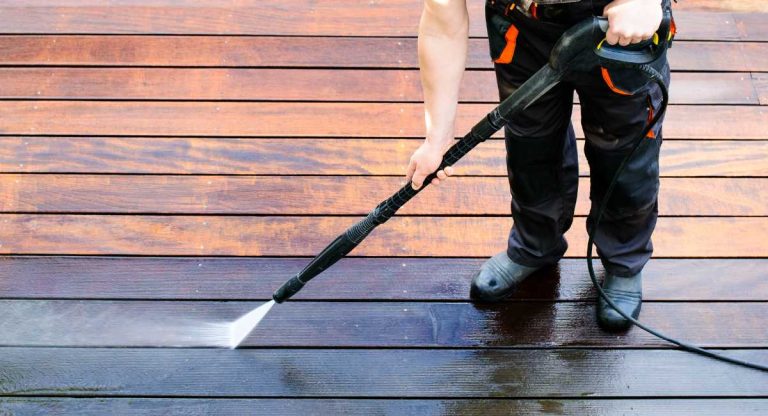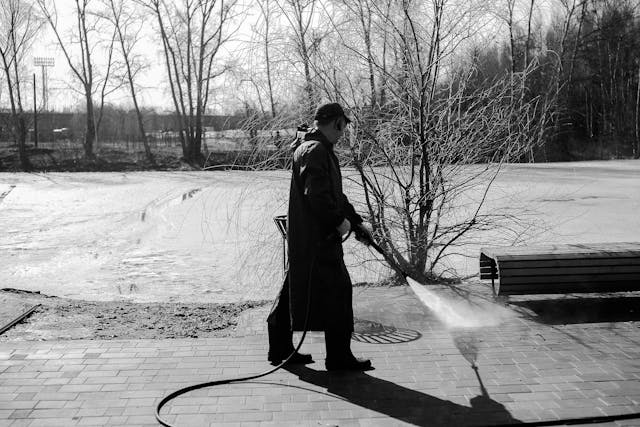
When it comes to maintaining a historic home, every decision matters. From preserving original woodwork to protecting antique stone facades, owners of older properties know that what works for modern construction might be a disaster for something built in the 1800s. 🏚️❤️
Power washing, while incredibly effective at removing years of grime, mildew, and buildup, isn’t always a one-size-fits-all solution — especially when it comes to historic structures. So before you hire just any pressure washing service, here’s what you need to know. 🧽⚠️
🏡 Why Power Washing Can Be Risky for Older Homes
Historic homes often include:
- Delicate or aging wood siding
- Original brickwork and mortar
- Hand-laid stone foundations
- Lead-based paint
- Worn window caulking or sealants
These features can easily be damaged by high-pressure water, aggressive detergents, or the wrong cleaning methods. A single mistake can cause peeling paint, eroded mortar, water intrusion — or even long-term structural damage. 💥
Power washing isn’t off-limits for older homes, but it must be handled with care — ideally by specialists who understand historic preservation. 👷♂️
🤔 Questions to Ask Before You Hire
Before bringing in a contractor, be sure to ask these specific questions to gauge their experience and competence with older properties:
1. Have You Worked on Historic Homes Before?
Don’t assume. Ask directly. Contractors should be able to provide examples, references, or before-and-after photos from similar jobs.
2. What Type of Cleaning Method Do You Use?
High pressure isn’t always the answer. You want to hear terms like “soft washing,” “low-pressure cleaning,” or “detergent-based cleaning” — especially for delicate surfaces.
3. Do You Perform a Site Assessment Before Starting?
The best pros will inspect the home first, identify fragile areas, and customize the pressure level, nozzles, and cleaning solutions accordingly.
4. Can You Provide Proof of Insurance?
If something goes wrong, you don’t want to be left holding the bill. Make sure they carry liability insurance and understand the added value of what they’re cleaning.
Browse Amazon Here For Popular Pressure Washers And Accessories
🧼 Soft Washing: The Safer Alternative
For historic homes, soft washing is typically the go-to method. This technique uses:
- Low-pressure water spray (under 500 PSI)
- Eco-friendly cleaning agents
- Gentle rinsing methods
Soft washing minimizes the risk of chipping paint, damaging brick mortar, or soaking through aging siding. It’s particularly useful for:
- Painted clapboard or cedar siding
- Delicate architectural details
- Historic brick or stone chimneys
- Roofs with old shingles 🏠💦
🧪 Mind the Detergents
Older homes may have porous surfaces that absorb moisture or chemicals more easily. That’s why it’s crucial the contractor uses:
- Biodegradable, non-toxic soaps
- No bleach (unless carefully diluted and tested)
- Cleaners safe for nearby gardens or original landscaping
You should always ask for a Material Safety Data Sheet (MSDS) if you have concerns about what they’re using.
🌱 Bonus tip: Pre-watering surrounding vegetation can prevent chemical absorption if overspray happens.
🔍 Watch for Vulnerable Areas
Your power washing company should take precautions with:
- Loose window glazing (common in older homes)
- Cracked mortar or brickwork
- Exposed wood or lead-based paint
- Original foundation stones
A good technician will cover windows, vents, and exposed wiring with plastic sheeting or avoid certain areas altogether. Taping off fragile spots shows care and professionalism. 🎯
💸 Expect to Pay a Bit More
Cleaning a historic home is not a fast, slap-on-the-water-and-go job. It takes:
- More time
- More care
- Often specialized equipment or techniques
As a result, you can expect to pay more than you would for a modern vinyl-sided home. However, that investment protects your property’s value — and its history. 🏛️💰
Typical price ranges vary depending on the home’s size and materials, but you might pay:
- $350–$650 for siding
- $200–$400 for stone or brick cleaning
- $100–$200 more for preservation-focused care
Always get multiple quotes and choose based on experience, not just price.
📸 Take Before-and-After Photos
Before the crew arrives, take a full set of “before” pictures from various angles. If anything goes wrong, or if damage occurs, you’ll have a record.
After the job is complete, do a walk-through:
- Look for chips, streaks, or water leaks
- Test windows and doors for new drafts
- Document anything that doesn’t look right
Most issues are avoidable with the right prep — but catching them early is key to getting any problems fixed promptly.
📷 Bonus: Those after-photos also look great when your home is sparkling clean and ready to show off!
✅ Final Thoughts
Power washing a historic home isn’t about blasting away dirt — it’s about carefully restoring and preserving the beauty that’s been built over generations. 🧡
By choosing the right service, asking the right questions, and opting for gentle, preservation-friendly techniques, you can safely refresh your home’s exterior without compromising its integrity.
So go ahead — let your beautiful old home shine like it did a century ago. Just be sure to treat it with the respect and protection it deserves. 🏡✨
Browse Amazon Here For Popular Pressure Washers And Accessories






